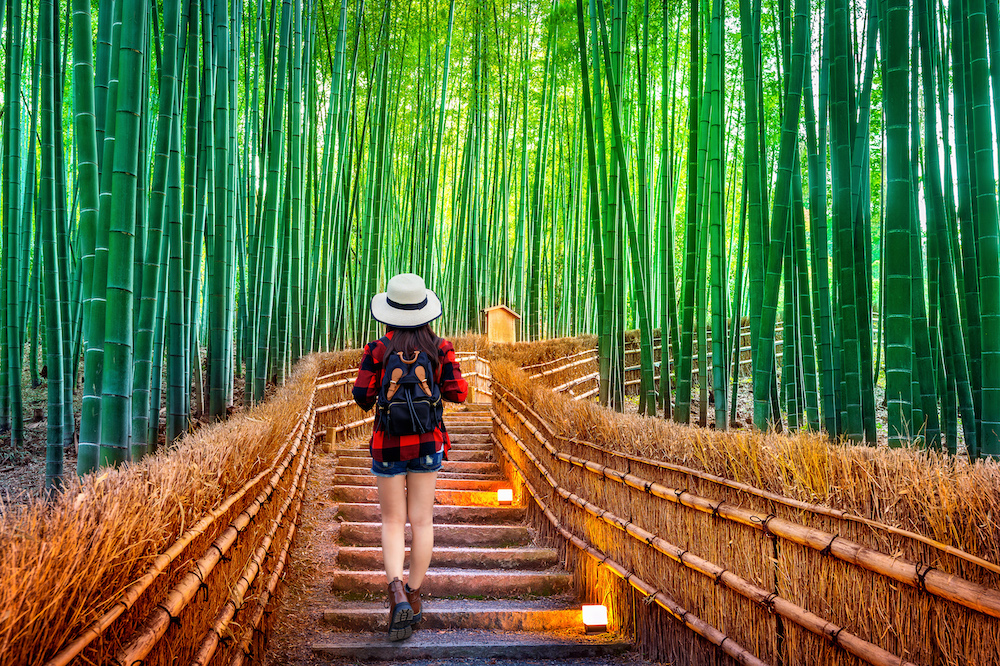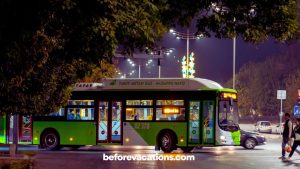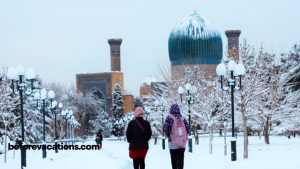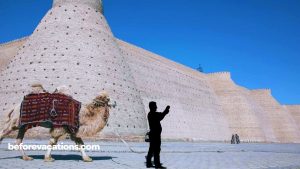Just 20 minutes from Kyoto Station lies one of Japan’s most serene and unforgettable experiences: the Arashiyama bamboo forest trails. Lined with towering bamboo stalks, the trails weave through a timeless landscape that combines spiritual Zen energy, lush greenery, and centuries of heritage. This guide offers everything you need to know—from trail options and tips to the best time to visit, insider pathways, and nearby highlights—to help you plan your perfect Arashiyama adventure.
Why Choose Arashiyama’s Bamboo Forest Trails?
Arashiyama’s bamboo trails are more than just a scenic walkway—they offer a deeply immersive journey into nature, art, and tradition. Unlike typical attractions, these trails provide an opportunity to wander through a living, breathing natural monument. The gentle rustling of bamboo leaves, the ethereal glow filtering through the stalks, and historic shrines nestled within the grove create a sensory-rich experience that stays with you long after you’ve walked back into the city.

Plus, the peaceful atmosphere contrasts sharply with the bustling streets of Kyoto, making it an ideal escape for solo travelers, couples, or families looking for balance in their trip.
Loading the Trail: Two Primary Routes to Explore
There are two intertwined bamboo trail routes—each offering distinct vibes and experiences. The main **Chikurin no Komichi** (Path of Bamboo) spans around 400 meters from Tenryū-ji’s north gate. This iconic route is perfect for early-morning strolls and classic postcard shots.
The less traveled **Chikurin no Sansakuro** extends north past Nonomiya Shrine and winds deeper into the grove. This extension is quieter and leads to hidden temple gates and peaceful clearings—great for mindful walking or photography away from the crowds.
Best Time to Visit (Avoiding Crowds & Capturing Calm)
Timing makes all the difference. For a quiet and magical experience, aim for early morning—ideally before 8 AM. Studies show that tour groups swarm after 9 AM, creating shoulder-to-shoulder traffic :contentReference[oaicite:3]{index=3}. Late afternoon (around 4–5 PM) can also be pleasant, though fewer lighting effects than dawn.
Seasonally, spring (early April) and autumn (late November) bring stunning colors. However, summer offers lush vibrancy and fewer crowds. Winter and occasional nighttime illuminations offer unique, ethereal experiences—albeit colder and quieter.
How to Get There: Train, Tram, or Scenic Railway
Most travelers arrive via the **JR Sagano Line** to Saga‑Arashiyama Station—roughly 20 minutes and ¥240–300 from downtown Kyoto :contentReference[oaicite:4]{index=4}. A short 10‑minute walk takes you to the trailhead.
Alternatively, take the charming **Sagano Scenic Railway** to Torokko Station—adding slower-paced, riverside views. The **Randen tram** to Arashiyama Station (Keifuku) also works, though the final walk is slightly longer. Bus routes to Nonomiya offer direct access towards the quieter trail extension.
What Else to See Along the Trails
The trails are just the beginning. Stop by historic sites like **Tenryū-ji Temple**, a UNESCO World Heritage site with beautiful gardens. Visit **Nonomiya Shrine**, known for its romantic and fertility blessings. Slight detours will lead you to **Togetsu-kyō Bridge** and the scenic **Okochi Sansō Garden**. Nearby, the **Iwatayama Monkey Park** offers panoramic canyon views alongside semi-wild macaques :contentReference[oaicite:5]{index=5}.
Activities & Local Experience Tips
Enhance your visit with a kimono rental or rickshaw ride through the forest, adding cultural flair and photo-ready memorability :contentReference[oaicite:6]{index=6}. For deeper immersion, join a **mindfulness walking tour** that guides you through meditative observation and quiet reflection—perfect for a sensory reset :contentReference[oaicite:7]{index=7}.
Practical Tips for a Smooth Visit
- Footwear: Wear sturdy shoes—some paths can be uneven and slippery.
- Visitor Etiquette: Keep hush voices, don’t damage bamboo, and follow the spatial flow.
- Facilities: Bathrooms near the temple gates; limited cafés in peak zones.
- Weather: Bring a light raincoat—bamboo paths are enchanting with morning mist.
How Long You’ll Need
Walking the main bamboo alley takes about 30–45 minutes, photo stops included :contentReference[oaicite:8]{index=8}. Extend for 1.5–2 hours to include temples, shrines, and hidden trails. A full half-day allows for riverside cafés, rickshaws, and the bamboo experience at your pace.
Final Take: Why These Trails Captivate Travelers
The Arashiyama bamboo forest trails are a travel staple for a reason. You step into a natural cathedral that engages your senses, calms your mind, and connects you to centuries of Japanese tradition. Despite its popularity, thoughtful timing and route choices reveal quieter moments that feel like a private retreat.
Whether you’re chasing early morning serenity, cultural rituals, or photographic beauty, these trails deliver a soul-refreshing slice of Kyoto’s natural heritage.
Ready to walk among the bamboo and breathe in Kyoto’s living forest? Plan your trip now and share your experience—or ask questions below!










